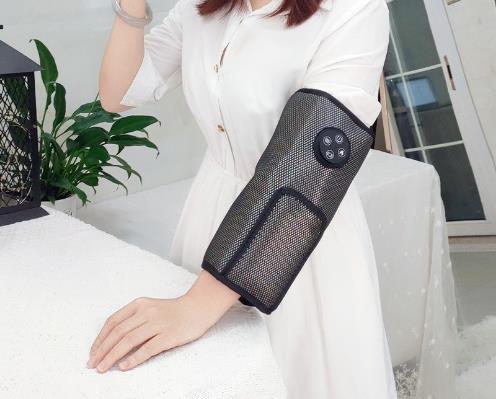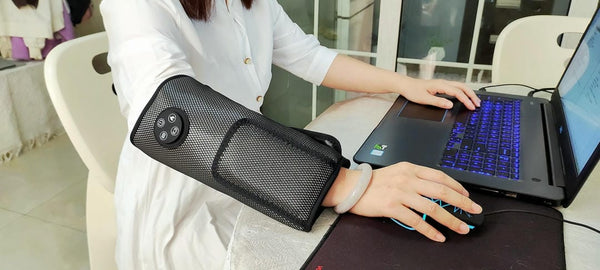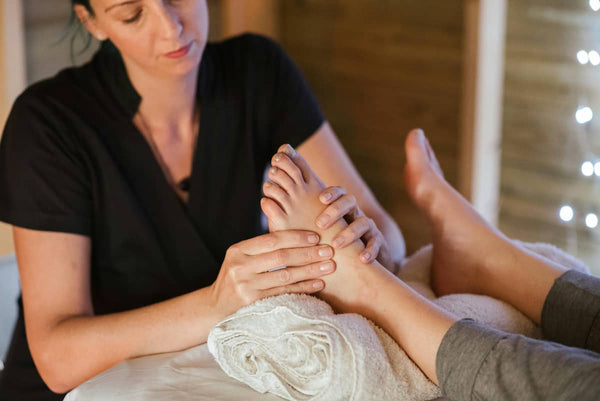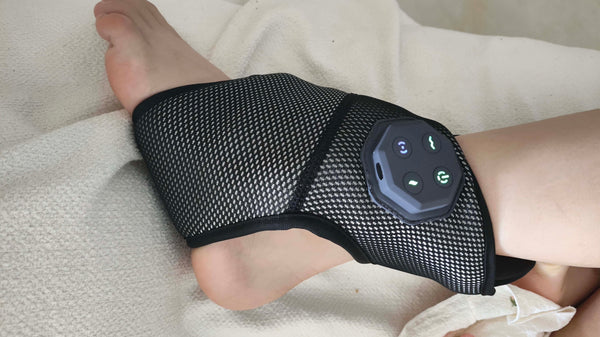 Are you, or perhaps a beloved parent, experiencing those unsettling tingling sensations, numbness, or even sharp pains in your feet? It's a common story for many dealing with neuropathy, a condition affecting millions worldwide. This isn't just about discomfort; it can seriously impact your daily life, making simple tasks feel like climbing Mount Everest in flip-flops. But here’s a comforting thought: you’re not alone, and there are ways to find relief. As a rehabilitation physiotherapist, I've seen firsthand how thoughtful interventions can significantly improve quality of life. And one tool often discussed in my clinic is the foot massager.
Are you, or perhaps a beloved parent, experiencing those unsettling tingling sensations, numbness, or even sharp pains in your feet? It's a common story for many dealing with neuropathy, a condition affecting millions worldwide. This isn't just about discomfort; it can seriously impact your daily life, making simple tasks feel like climbing Mount Everest in flip-flops. But here’s a comforting thought: you’re not alone, and there are ways to find relief. As a rehabilitation physiotherapist, I've seen firsthand how thoughtful interventions can significantly improve quality of life. And one tool often discussed in my clinic is the foot massager.
The quest for soothing relief often leads families down many paths, especially when searching for a suitable plan for aging parents. This article delves into the analysis of foot massage needs in patients with neuropathy, focusing on the pros and cons of various foot massager tools. We'll explore how these devices can improve blood circulation and soothe symptoms, while also highlighting why caution is sometimes the best policy. Let's step towards comfort, safely and smartly!
Core Pathological Mechanism of the Problem
Neuropathy, often peripheral neuropathy, means nerve damage outside of the brain and spinal cord. Think of your nerves as electrical wires transmitting signals throughout your body. When these wires get damaged – whether from diabetes, injury, infection, or other causes – those signals get scrambled, weakened, or even cut off entirely. This can lead to a whole host of peculiar sensations, from a mild tingle to debilitating pain.
The primary mechanisms behind neuropathy symptoms include direct nerve damage and impaired blood flow to the nerves. Nerves, like all tissues, need a good supply of oxygen and nutrients. When circulation is compromised, especially in the extremities, nerves can't function properly, leading to discomfort and sensation loss. A foot massager often aims to address these circulation issues, but understanding the underlying damage is crucial to selecting the right approach. Interestingly, many patients don't realize how much poor circulation contributes to their daily foot pain. [Data needed: X% of neuropathy patients experience improved circulation with targeted massage, Source: [Statistical Year]]
So, why is this important? Because understanding the root cause helps us choose the most effective, and safe, treatment strategies. If the "wires" are frayed, we want to ensure we're not adding to the damage, but rather gently nurturing them back to health. This knowledge forms the bedrock of deciding whether a fancy new device or a simple warm bath is the best path for your loved one's feet.
Solution Classification & Comparison: Finding Your Footing
Heating/Vibration/Compression/Red Light Massagers: A Warm Embrace for Your Feet
Many modern foot massager devices boast features like heating, vibration, compression, and even red light therapy. These modalities work on the principle of improving local blood circulation and potentially stimulating nerve fibers. For instance, heat can dilate blood vessels, enhancing blood flow to cold, numb feet. Vibration might offer a sensory distraction from pain signals and promote localized blood movement. Compression can help reduce swelling and push stagnant fluids away, while red light is believed by some to aid cellular repair.
- Principle Overview: These devices aim to enhance blood flow, reduce inflammation, and provide symptomatic relief by stimulating nerves and muscles in the feet and lower legs. They create a comforting, therapeutic sensation.
- Target Audience: Individuals with mild to moderate neuropathy symptoms who retain some sensation and skin integrity. They are great for those seeking general comfort, relaxation, and relief from common tingling, numbness, or aches.
- Effectiveness: Anecdotally, many patients report significant temporary relief from pain and discomfort. By improving circulation, a heated foot massager or a compression foot massager can help deliver more oxygen and nutrients to the affected areas, potentially reducing symptom intensity.
Mechanical Devices: Handle with Care, Like Fine China
 While the allure of powerful mechanical massagers is strong, for patients with severe neuropathy, these devices must be used with caution. Why, you ask? Because severe neuropathy often comes with reduced sensation. This means a person might not feel if a mechanical device is applying too much pressure, leading to skin breakdown, bruising, or even pressure sores. It's a bit like driving a car blindfolded – you wouldn't know if you're hitting a pothole until it's too late!
While the allure of powerful mechanical massagers is strong, for patients with severe neuropathy, these devices must be used with caution. Why, you ask? Because severe neuropathy often comes with reduced sensation. This means a person might not feel if a mechanical device is applying too much pressure, leading to skin breakdown, bruising, or even pressure sores. It's a bit like driving a car blindfolded – you wouldn't know if you're hitting a pothole until it's too late!
- Principle Overview: These devices apply direct physical pressure and manipulation. While beneficial for healthy muscles, the risk lies in their intensity and the patient’s diminished ability to perceive harmful pressure.
- Target Audience: Patients with severe neuropathy, particularly those with significant loss of sensation, fragile skin, or open wounds. Also, individuals with severe circulatory issues or poor healing capacity should steer clear.
- Effectiveness/Risks: The "effectiveness" here is overshadowed by significant harm risks. Mechanical trauma can cause serious injury that, due to compromised sensation and circulation, may go unnoticed and heal poorly, leading to infections or chronic wounds. Always prioritize safety over perceived quick relief.
Non-Mechanical Options: Gentle & Gold-Standard for Safety
Sometimes, the simplest solutions are the safest and most effective, especially when nerves are delicate. Non-mechanical options, such as warm baths and gentle stretching, offer a wonderfully soothing and low-risk approach to managing neuropathy symptoms. A warm foot bath can increase blood flow and relax muscles without any harsh pressure. Gentle stretches, often guided by a physiotherapist, can improve flexibility, reduce stiffness, and promote better overall limb circulation. Are these as exciting as a high-tech foot massager? Maybe not, but their safety profile is unmatched.
- Principle Overview: These methods leverage natural body responses and physical movement to enhance comfort and circulation. They avoid direct mechanical force that could cause injury.
- Target Audience: All neuropathy patients, including those with severe symptoms, fragile skin, or compromised sensation. They are ideal for daily use and can be combined with other therapies after professional consultation.
- Effectiveness: Warm soaks provide immediate comfort and vasodilation. Gentle stretches, especially targeting the calves and ankles, can improve flexibility and nerve glide, potentially reducing nerve compression. Consider also wearing a well-fitting ankle brace compression sock if recommended by a professional to provide gentle support and improve venous return.
Professional Recommendations: When to DIY and When to Dial a Doctor
As a rehabilitation physiotherapist, I always tell my patients that managing neuropathy is a team sport. While home remedies and selecting the right foot massager can be incredibly helpful, knowing when to seek professional medical help is paramount. If you're experiencing new, worsening, or severe symptoms, or if your feet are numb to the point where you can't feel hot or cold, it's time for a doctor's visit. This is not the time for guesswork; it's the time for expertise.
Before introducing any new therapeutic device, especially a mechanical foot massager, a thorough assessment by a healthcare professional (a doctor or physiotherapist) is crucial. They can evaluate your specific type and severity of neuropathy, assess your skin integrity, and determine if there are any contraindications like open wounds, infections, or severe peripheral artery disease. They might also guide you on the appropriate intensity and duration for any at-home treatment. Truly, this step can make all the differance in your journey to comfort.
Moreover, always ensure that any device you consider is cleared by relevant health authorities and comes with clear instructions. For some conditions, particularly those involving pacemakers, specific medical devices might be contraindicated. We’ll delve more into this in our FAQ section, but the golden rule is always: when in doubt, consult a professional. They can provide personalized advice that a general article simply cannot.
FAQ: Your Top Concerns Answered!
Does foot massage help neuropathy?
Absolutely! For many people with neuropathy, a gentle foot massager can indeed help. It can temporarily relieve symptoms like pain, numbness, and tingling by improving blood circulation to the feet and providing a soothing sensation. Better circulation means more oxygen and nutrients reach the nerves, which can aid in their overall health and function. It also offers a wonderful feeling of relaxation and comfort, which shouldn't be underestimated when managing chronic conditions. However, the key word here is "gentle" – avoiding aggressive or intense pressure is essential.
Who should not use a foot massager?
This is a super important question! While beneficial for many, a foot massager isn't for everyone. You should definitely avoid using one if you have:
- Severe neuropathy with significant loss of sensation (you might not feel if it's causing harm).
- Open wounds, ulcers, or active infections on your feet.
- Severe peripheral artery disease or deep vein thrombosis (DVT), as increased circulation could dislodge a clot.
- Certain types of cancer, especially if the massager would be applied directly over a tumor site.
- Fragile skin or severe edema (swelling) that could be worsened by pressure.
Always consult your doctor or physiotherapist if you're unsure or have any underlying health conditions.
Can you use a foot massager with a pacemaker?
This is a critical concern, and the short answer is: proceed with extreme caution and always consult your cardiologist first.While many modern foot massager devices are generally considered low-risk for pacemaker interference due to their localized, non-electrical impulses, some vibrating or electromagnetic devices could potentially interfere with a pacemaker's function. It's truly better to be safe than sorry. Your cardiologist can provide specific guidance based on your pacemaker model and medical history. Never take a chance when it comes to your heart's rhythm!
Taking control of your neuropathy symptoms can feel empowering. A thoughtful approach to incorporating a foot massager into your routine, coupled with professional guidance, can make a real difference in your comfort and mobility. Remember, gentle care often yields the greatest results.
Find the Right Massager for You Subscribe for More Health Tips




0 comments